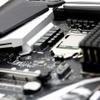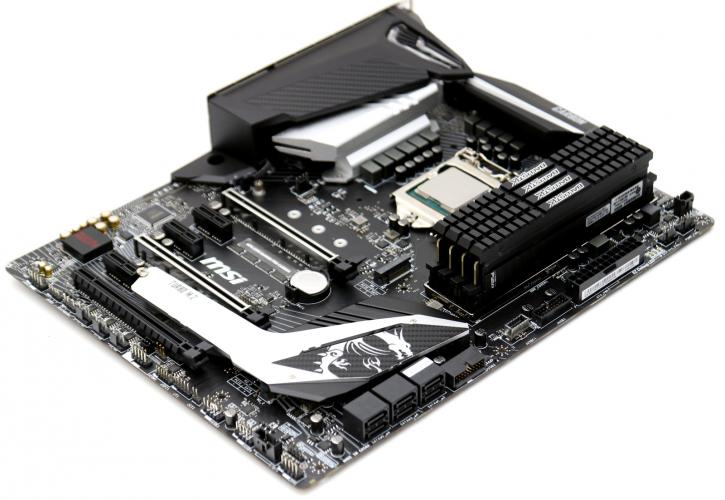Final Words & Conclusion
Conclusion
With the MSI MPG Z390 Gaming Pro Carbon, aside from a way too long name, little is wrong. At the 170~180 USD/EUR marker, it offers a more value proposition. And albeit that kind of cash isn't value, it, however, is a more value product within the Z390 range, capisce?
Granted though, and I already mentioned it before the Z390 remains to be a bit of a mystery release. It is a small step upwards with merely adding native USB 3.1 Gen 2 and WIFI, that and it's better optimized on the VRM area to deal with the new 8-core processors. The looks are nice, it offers baseline performance, pretty good OC potential, and offers a very decent VRM design as well. Also, we like the option to install 2x M2, however, feel using just one heatsink on the primary M2 slot is a little shy. The PCB is clean, everything is dark and the new heatsinks work out really well as well as looking really nice. Paired with that Core i9 9900K the combo does feel like proper infrastructure, really nice. Overclocking wise we reach roughly 5.1~5.2 GHz on all eight cores 100% stable on our sample. You'll likely see some CPUs hit 5.3 and others 5.0, but it is along this range.
Power consumption
With this eight cores and sixteen threads proc you get a 95 Watt TDP processor. With the system at idle with a GeForce RTX 2080 Ti installed / 16 GB memory / SSD and the Z390 motherboard, I hovered at roughly 60 Watts in IDLE. That's okay, the load values are okay as well but definitely higher. When we stressed the processor 100% run we reach roughly 200 Watts with this 8-core part. That's the entire system. That is on the high side alright. Then again, does anyone actually care about it when you get performance metrics like shown today?
DDR4 Memory
For Coffee Lake-S (8th and 9th Gen Intel procs) and DDR4 we always say, volume matters more than frequency. A 3,200 MHz kit, for example, is more expensive and does offer better bandwidth but the performance increase in real-world usage will be hard to find. Unless you transcode videos over the processor a lot. As always, my advice would be to go with lower clocked DDR4 memory with decent timings, but get more of it. Don't go for 8 GB, get two or four DIMMs and in total a minimum of 16 GB. The reason we test at 3200 MHz is simple, we do the same for AMD Ryzen and want to create a fair and equal playing ground for both. 3200 MHz is, however, a very nice equilibrium for both processor brands.
Performance & tweaking
We tested multiple Z390 motherboards all with the latest BIOS. Once tweaked we noticed that the eight cores like a bit of extra voltage, we expect all-core tweaks in the 5.1~5.2 GHz marker to need ~1.35 Volts on the processor. While that does increase power consumption, it wasn't something that scared me away. Some platforms will and procs will also be able to manage a lower voltage. If you plan a tweak at that 5.2 GHz marker then remember my remarks on cooling, you will need LCS, that or a very good heatpipe cooler. Again, we have been using an ES sample so I cannot say anything conclusive on the final retail products (these might run a tiny bit cooler). The infrastructure that Z390 offers is easy to use, you increase the CPU voltage and multiplier and you are good to go. Another plus for the Intel platform is that over the years they have been able to refine their memory controllers, pop in anything XMP 2.0 and you have a 90% chance it'll work straight out of the box with very fast memories. Mind you that all our tests are performed at 3200 MHz DDR4, similar to Ryzen and Threadripper to remain objective and for fair play on both sides. realistically though, Ryzen is more memory frequency dependent in gaming than Intel is.
Final words
The MSI MPG Z390 Gaming Pro Carbon is a nice board. Again MSI, the naming is getting way too long and I find the MAG/MEG/MPG branding confusing. Overall it's all green lights for features, albeit the lack of a heatsink on one of the M2 slots makes the PCB more exposed. We also miss out WIFI and perhaps a faster ethernet jack (2.5/5 or 10 Gbps). Other than that there's little to complain really, support for SLI and CrossFire, and an ALC1220 audio codec with s/pdif and two M2 slots. Out of the box, performance and compatibility are good, tweaking is simply put extremely easy on the MSI motherboards with a lesser voltage needed opposed to some of the competition. Recommended, we expect this board to sell in a 170~180 USD/EUR domain.
Handy related downloads:
- Sign up to receive a notice when we publish a new article
- Or go back to Guru3D's front page



